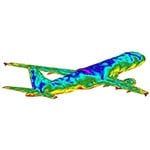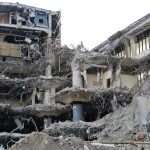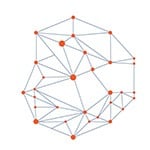The fundamental civil engineering challenges that affect the world today require big-picture solutions. The department’s mission is to build the knowledge and tools that will enable civil engineering to move away from empirical ad hoc approaches into strategies based on scientifically grounded analysis.
With a program rooted in fundamental structural engineering and mechanics, systems thinking, advanced computational methods and uncertainty quantification, the department faculty aim to guide students into successfully navigating the conflicting objectives inherent in addressing grand societal challenges, such as resilient cities, human safety and security, space exploration and habitation, decision-making and health, and future energy infrastructure.
In order to take a big-picture approach in addressing grand societal challenges, departmental research is focused in three main areas: mechanics of materials, structures, and systems.
 Mechanics of Materials
Mechanics of Materials
The Mechanics of Materials (MoM) program provides a comprehensive research and educational platform in computational and experimental modeling and design of materials and structures. Faculty members collaborate with government and industry partners on research of significant interest to the aerospace, automotive, defense, manufacturing, materials, biomedical and electronics industry that spans multiple scales and includes everything from codes used to design aircraft engines to machine learning.
Emphasis is placed on the understanding and prediction of deformation, fracture and fatigue behavior of material and structural systems.
Topology optimization and material design are also a part of the MoM focus. In addition, faculty and their groups are working on emerging fields like architected materials and DNA nanotechnology. Learn More
 Structures
Structures
From bridges to buildings, from space probes to human prostheses, structural engineers design and build the internal assemblages that allow these structures to carry loads and operate in their environment. Departmental faculty provide novel solutions for structures that optimize, overcome uncertainty, and provide resilience and extreme efficiency under a variety of hazards.
The program’s key strengths include earthquake engineering, fire engineering, stochastic mechanics and structural reliability, optimization, and cold-formed steel structures.
Drawing on expertise in the mechanics of materials and systems programs within civil engineering, faculty collaborate on a number of society’s grand challenges. Learn More
 Systems
Systems
The growth of systems science and engineering parallels the growth of technology. Whereas previously , the term “system” evoked images of human-made entities with closely interacting components coordinated to produce a set of outcomes, current usage of the term is much broader in scope and scale.
Systems research has evolved into a trans-disciplinary, collaborative field, connecting mathematics, engineering, social and physical sciences and medicine. Departmental work brings together students, faculty, and researchers from other departments in the Whiting School of Engineering, as well as from the Krieger School of Arts and Sciences, the Bloomberg School of Public Health, the School of Medicine, and the Applied Physics Laboratory.
Current areas of work include systems approaches to public health, the science and technology of patient treatment and safety, informatics for individualized health and education, and civil infrastructure. Learn More